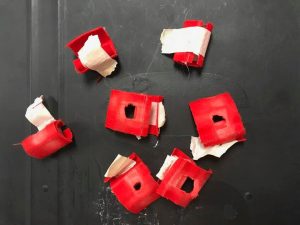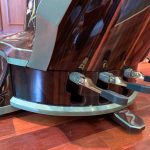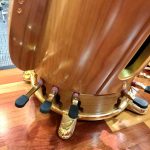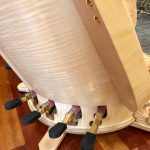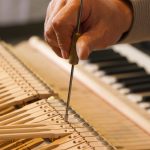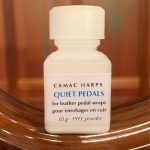Camac Blog
Latest
November 18, 2019
Users of pedal felt will recognize technican Liza Jensen’s recent memorial photo (right). Quiet as felt is, it doesn’t last. Torn felt makes your pedals catch and stick; it is also bad for your harp, because the pedal mechanism does not engage accurately with the box any more. Many harpists who play a lot – orchestral musicians, for example – opt for more robust leather.
Camac boldly went where no harp maker had gone before, when we developed teflon pedal cushions. These take nigh-on forever to wear out, and are both practical and popular. But teflon, being tougher, is noisier. Many teachers view this attribute as positively useful – if the owner of a student harp can pedal quietly on teflon, they can pedal quietly anywhere.
Nonetheless, we wanted to do better for concert soloists, recording artists, and all harpists with very high-level requirements regarding the quietness of their pedals. This development has been several years in the planning, because we wanted to find the quietest possible leather, without moving to felt. We went through many different prototypes with many different kinds of leather, tested in real scenarios by individual concert artists over significant periods of time.
All our high-end concert harps (Elysée, Trianon, Oriane, Canopée and Art Nouveau) are now delivered with our optimal leather pedal wraps as standard. On our online boutique, we also sell the special talc that you should apply regularly to the leather to prevent any squeaking. We originally received this powder from Steinway, who use it to reduce hammer friction – a contribution from piano technicians that has helped us arrive at our final result.

